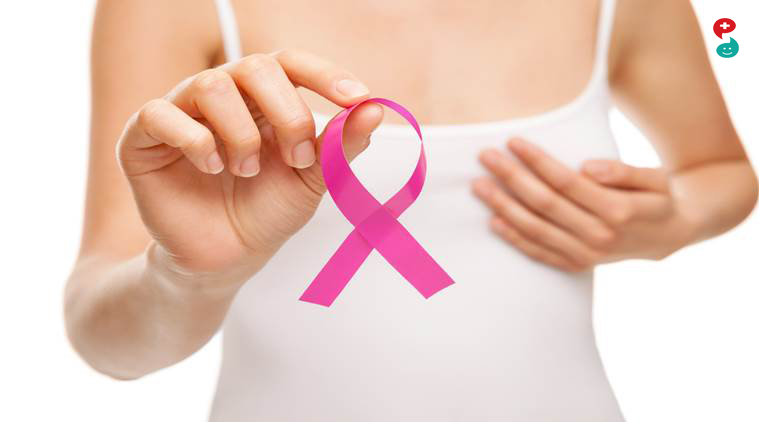
Breast cancer starts when cells in the breast begin to grow out of control. These cells usually form a
tumor that can be seen on an x-ray or felt as a lump. The tumor is malignant (cancer) if the cells
can grow into (invade) surrounding tissues or spread (metastasize) to distant areas of the body. Breast
cancer occurs almost entirely in women, but men can get breast cancer too.
Cells in nearly any part of the body can become cancer and can spread to other areas. .
Where breast cancer starts
Breast cancers can start from different parts of the breast. Most breast cancers begin in the ducts that
carry milk to the nipple (ductal cancers). Some start in the glands that make breast milk globular
cancers. There are also other types of breast cancer that are less common.
A small number of cancers start in other tissues in the breast.
Although many types of breast cancer can cause a lump in the breast, not all do. Many breast cancers
are found on screening mammograms which can detect cancers at an earlier stage, before they
can be felt, and before symptoms develop. There are other symptoms of breast cancer you should
watch for and report to a health care provider.
It’s also important to understand that most breast lumps are benign and not cancer (malignant). Noncancerous breast tumors are abnormal
growths, but they do not spread outside of the breast and they are not life threatening. But some
benign breast lumps can increase a woman's risk of getting breast cancer. Any breast lump or change
needs to be checked by a health care professional to determine if it is benign or malignant (cancer) and
if it might affect your future cancer risk
How breast cancer spreads
Breast cancer can spread when the cancer cells get into the blood or lymph system and are carried to
other parts of the body.
The lymph system is a network of lymph (or lymphatic) vessels found throughout the body that
connects lymph nodes (small bean-shaped collections of immune system cells. The clear fluid inside
the lymph vessels, called lymph, contains tissue by-products and waste material, as well as immune
system cells. The lymph vessels carry lymph fluid away from the breast. In the case of breast cancer,
cancer cells can enter those lymph vessels and start to grow in lymph nodes. Most of the lymph vessels
of the breast drain into:
Lymph nodes under the arm (axillary nodes)
Lymph nodes around the collar bone (supraclavicular [above the collar bone] and
infraclavicular [below the collar bone] lymph nodes)
Lymph nodes inside the chest near the breast bone (internal mammary lymph nodes)
If cancer cells have spread to your lymph nodes, there is a higher chance that the cells could have
traveled through the lymph system and spread (metastasized) to other parts of your body. The more
lymph nodes with breast cancer cells, the more likely it is that the cancer may be found in other organs.
Because of this, finding cancer in one or more lymph nodes oen aects your treatment plan. Usually,
you will need surgery to remove one or more lymph nodes to know whether the cancer has spread.
Still, not all women with cancer cells in their lymph nodes develop metastases, and some women with
no cancer cells in their lymph nodes develop metastases later.







